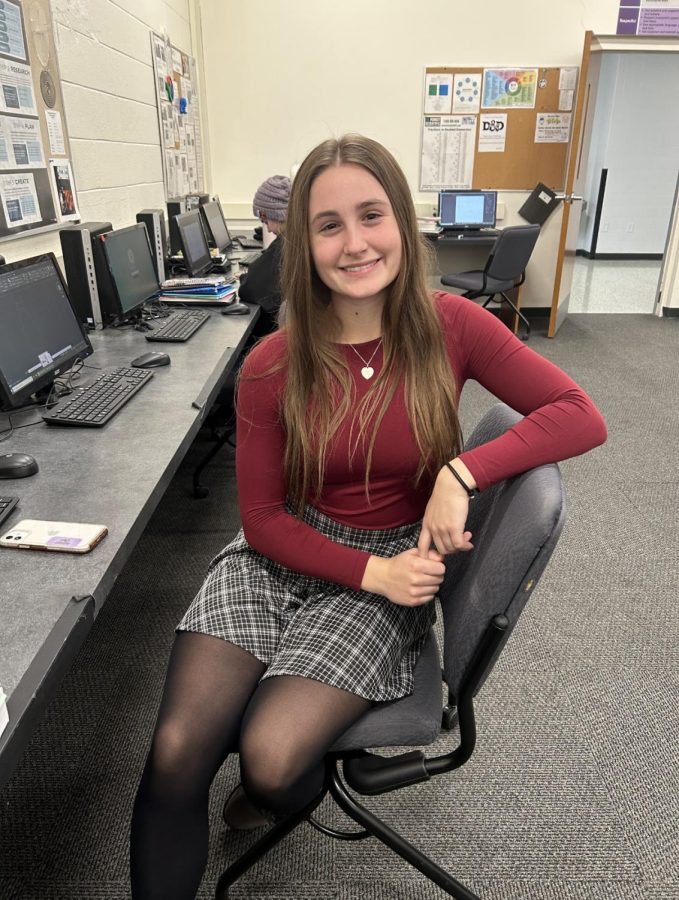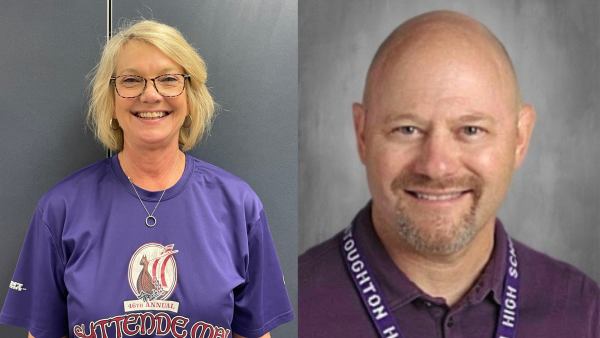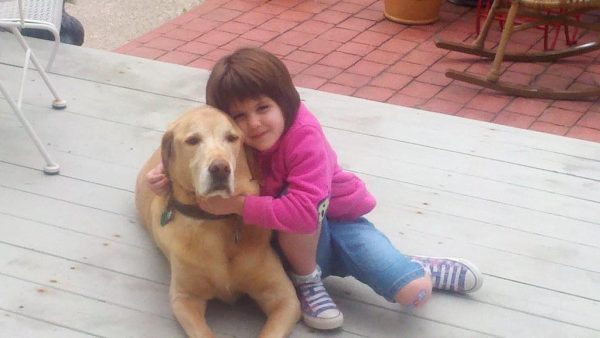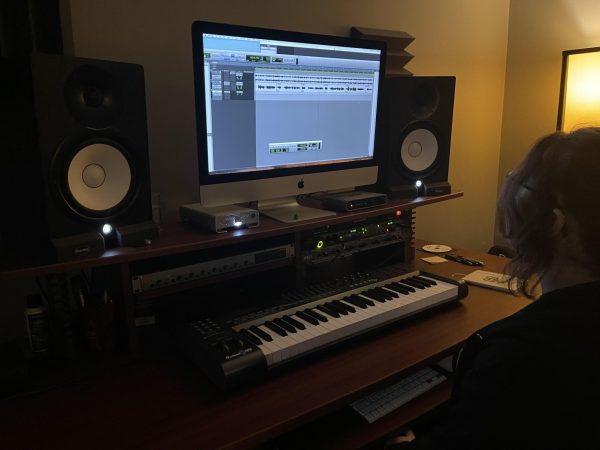Women in STEM
Pickett in the Fab Lab working on an architecture design.
They take chances, do what they love, and are proud of it. If you take a look around Stoughton High School, Kristina Weber, Teagan Pickett, and Morgan Rhyner are three students in particular who are taking risks and pushing themselves to new educational heights.
Kristina Weber is a senior at SHS. Since she has taken every STEM class she could at SHS, she now takes STEM classes at Madison Area Technical College.
Being a high school student at a college can be stressful, considering the older students, harder classes, increased pressure, full schedule, and many more challenges, but Weber takes it like a champ.
“I actually like it a lot, especially because it’s a lot of people who are also interested in the same thing [as me]. It’s different because you have to do a lot of work independently, but I think it’s worth it,” Weber says.
After high school, Weber plans to major in physics or astrophysics. If all else fails, biology is her runner-up. Her advice to other females interested in science is to “Take […] all the things that people say about you with a grain of salt. There’s always going to be struggles in science, especially for women, but it’s definitely worth it, especially if it’s something that you like,” Weber says.
Cindy Carter, a science teacher at SHS who teaches many STEM courses, has noticed an increase in female students taking science classes throughout the past few years.
“I think they’re hopefully seeing more people that are like them in […] some of those science careers,” Carter says. “Maybe it’s [seeing] some of their teachers, that’s what’s helping them see themselves in those areas.”
One of the main reasons Carter thinks someone might not take a science class is because they don’t fully understand all the opportunities that science gives.
“There are a lot of options out there in science that people wouldn’t maybe ever realize,” Carter says. “You don’t have to be a lab bench chemist.”
Fab Lab instructor Chris Wiemer experiences the opposite situation as Carter.
“We have a decent number [of women] in the intro course but as you get to the more advanced courses, we tend to have fewer female students,” Wiemer says. “The female students we’ve had have had good experiences in general, but we still struggle to increase the overall number of female students in the class. We also tend to get some students who take a lot of tech ed classes […] and those classes also tend to be predominantly male.”
Wiemer has tried many things to make Fab Lab as welcoming as possible to new students.
“I think there’s a certain barrier to entry that if people are not used to whatever the activity is, they are reluctant to sign up for it,” Wiemer says.
Another student who is talented, persistent, and very independent is senior Teagan Pickett. She has her own architecture class in the Fab Lab that she manages herself with the help of a textbook.
“[Having my own class is] definitely interesting. It’s caused me to develop more skills for problem-solving,” Pickett says. “But I like how I can be productive, and it gives me more of a vision of what college will be like.”
Pickett signed up for this architecture class her junior year, but there weren’t enough students interested to run it. The year before the COVID-19 pandemic, the school had ordered the textbook and curriculum for the class, so Teagan can now teach herself without the assistance of a teacher. She stays in a class full of other students in a prerequisite class while she takes the class beyond that.
Pickett uses a software called Revit that many civil engineers use to create something completely from scratch. The textbook gives a basic residential home that she has to make, along with other assignments as checkpoints along the way. Having to run and manage your own architecture class is difficult. Even with the textbook, it’s easy to get stuck.
“At times I wish there were more people because it can be frustrating when I don’t understand a certain concept, or I’m having problems, but I can’t figure out why,” Pickett says. “But I do enjoy working by myself.”
Pickett’s advice to other women who might be interested in STEM courses like this is to, “Just go for it. If fear is what’s holding you back, don’t let it because we need more women in STEM […] career paths because currently they are male dominated and we need more diversity. It can be a great experience if you just take a leap of faith and decide to do it.”
Junior Morgan Rhyner is also interested in STEM, having taken multiple Tech Ed classes including Intro to Woods, Drafting and Design, and this year, she’s taking Intro to Auto. She was one of the few women in all of those classes.
“For girls that want to take [STEM] classes, I say do it. I learned a lot of everyday skills in the classes that I took,” Rhyner says.
Taking new classes and trying things you’ve never done before may be difficult, but also worth it. These students advise to do what you love no matter if it’s out of your comfort zone or not. You’ll never know if taking that STEM or Fab Lab class could lead to your future lifelong career.
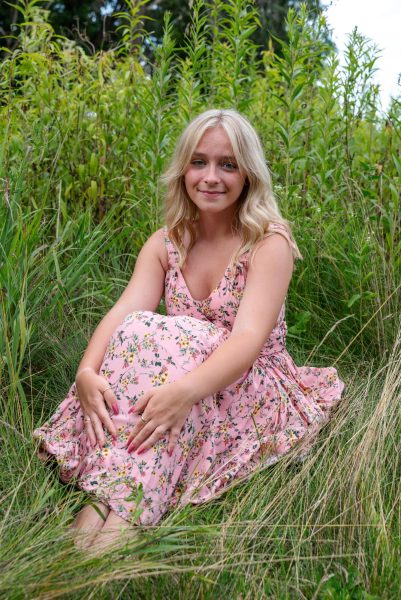
Raegan is a senior, and this is her second year on staff! She's the copy editor and a staff writer. She joined the Norse Star because she was told by her...

